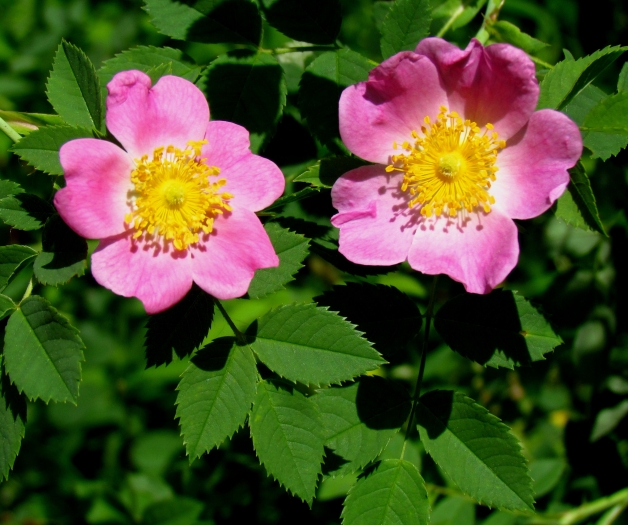Carolina Rose
(Rosa carolina)
Carolina Rose (Rosa carolina)
/
/

D. Gordon E. Robertson
CC BY-SA 3.0























































Estimated Native Range
Summary
Carolina Rose is valued for its ease of maintenance, tolerance of various soil types, and its ability to form thickets, which provide excellent cover for wildlife. It is used in naturalistic plantings, as a border shrub, and for erosion control. The rose hips, which are high in vitamin C, are edible but tart and can be used in jams and teas. This rose is drought-tolerant once established and prefers full sun to partial shade. It is adaptable to a range of soil conditions, provided they are well-drained. While it can spread by root suckers to form colonies, this can be managed with regular pruning.CC BY-SA 4.0
Plant Description
- Plant Type: Shrub
- Height: 1-3 feet
- Width: 5-10 feet
- Growth Rate: Moderate
- Flower Color: Pink
- Flowering Season: Summer
- Leaf Retention: Deciduous
Growth Requirements
- Sun: Full Sun, Part Shade
- Water: Low
- Drainage: Fast, Medium
Common Uses
Bee Garden, Bird Garden, Butterfly Garden, Edible*Disclaimer: Easyscape's listed plant edibility is for informational use. Always verify the safety and proper identification of any plant before consumption., Fragrant, Groundcover, Hedges, Showy Flowers, Street Planting
Natural Habitat
native to open woodlands, forest edges, and prairie thickets in Eastern Canada, the United States and into Mexico
Other Names
Common Names: Pasture Rose, Prairie Rose, Carolina-Rose, Rosier De Caroline, Carolinaros
Scientific Names: , Rosa carolina, Rosa parviflora, Rosa carolina var. carolina, Rosa petiolata, Rosa aucuparia, Rosa treleasei, Rosa carolina f. plena, Rosa carolina f. triloba, Rosa carolina var. litoralis
GBIF Accepted Name: Rosa carolina L.